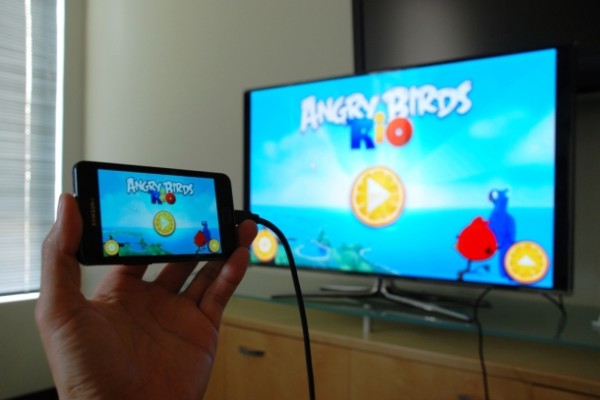
In an age of cord cutting, some cords are getting even more relevant. MHL has already been helping us stream video from our gadgets, but now it does even more.
The Sony Experia Z2 phone and tablet (sharing the same name) are the first devices to launch with MHL 3.0 support. MHL stands for Mobile High-Definition Link and is typically uses micro USB and HDMI connectors, although it is not limited to one connector, those are just the most common connectors used.
MHL 3.0 provides several upgrades over its previous iterations and with micro USB and appropriately enabled gadgets there are many advantages to be gained. MHL 3.0 has 4k support for multiple simultaneous display and 7.1 HD enhanced surround sound with Dolby TruHD all while charging up to 10W from any supported connections.
Although MHL 3.0 is 75X faster than MHL 2.0 at 75Mbps, it still doesn’t hold a candle to the 4.8 Gbps (1Gbps=1024Mbps) transfer rates seen on USB 3.0 or 10Gbps seen on Apple’s Thunderbolt, but it can be boosted to a (still much lower) 600Mbps with a 10 pin converter.
MHL 3.0 can be a big benefit for cell phone accessories when it comes to additional peripherals or docs since it has mostly media benefits. It would be especially useful in streaming services such as the Chromecast or Roku.
Additional support for peripheral controls such as keyboards and touch screens provide another huge benefit, along with better Remote Control Protocol, which allows control through a remote control your phone or other device when plugged into a TV.
Although the most convenient technology would not require any sort of tethering, wireless technologies that can accomplish anything similar to MHL 3.0 at this point are either nonexistent or way too expensive.
For now, MHL provides us with the ability to make better connections between more of our gadgets, but also shows us how much we could do as this technology continues to improve. Coupled with the improvement of streaming dongles, the idea of needing an entire entertainment center to surround your ideal TV setup is fast fading.
Source: Engadget
Be social! Follow Walyou on Facebook and Twitter
Read more on Walyou, HTC Teases Boomsound Improvements for All New HTC One, Google I/O is Just Around The Corner













